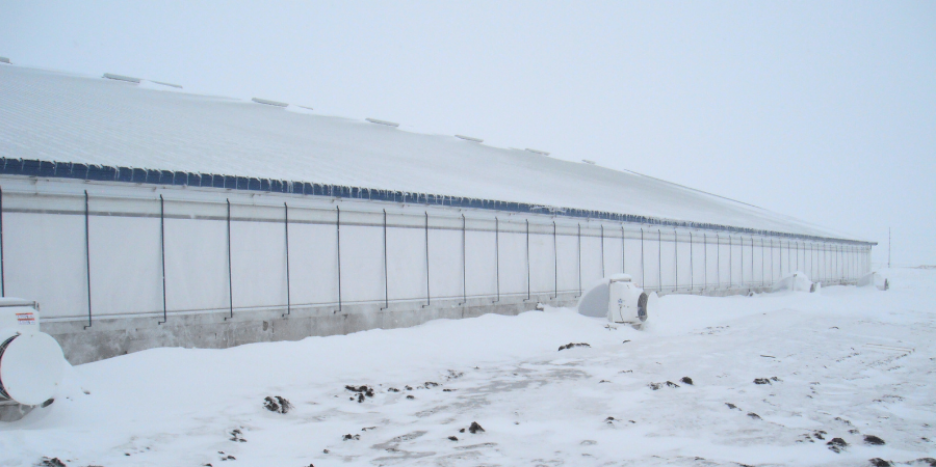Being proactive and planning building inspections on a regular schedule could minimize the exposure to potential issues if found and promptly addressed prior to winter weather.
Use this inspection checklist as a guide to ready your swine facilities for winter weather.
- Close soffit winter doors to avoid risking a snow filled attic. Inspect and clean open soffits.
- Inspect curtains for rips and tears. Repair and replace as needed. Install bubble wrap insulation between curtain and bird wire for additional insulation.
- Inspect bird wire and clean bin pads to keep birds from infecting the site.
- Check the ventilation system. Fans and louvers should be cleaned to remove dust. Insert solid winter louvers or plastic to reduce drafting. Test inlet actuators and cabling, and inspect inlets.
- Verify back up thermostat settings and test.
- Verify curtain drops work using thermostat not just unplugging the drop.
- Check all pullies and winches on emergency curtains and grease. Ensure there is no memory in the winch cable or white rust and ensure the clickers on winch have been removed.
- Verify all pit fans are functional and clean interior housings and louvers.
- Conduct heater maintenance and test gas lines for leaks.
- Inspect Feed Bin lids to ensure that they close properly.
- Evaluate winter rodent control protocols.
- Drain and winterize cool cell systems and pumps.
- Repair any leaky waterers or pipes. Insulate exposed pipes to avoid freezing.
- Seal cracks and inspect for leaks around door jambs.
- If a backup generator is present, verify it is serviced, has fuel with anti-gelling additive if using diesel, and test run it. Transfer power to ensure power transfers properly. Make sure all employees understand how to operate.
- Verify all curtain drops are functional, drop cables in place, and perform a drop test.
- Verify all contact information in the alarm system is up to date.
- Look for areas in the barn and attic that show moisture.
- Verify all curtain drops are functional, drop cables in place, and perform a drop test.
- Verify all contact information in the alarm system is up to date.
- Look for areas in the barn and attic that show moisture.
- Remove snow promptly from roofs.
- Use extreme caution when removing snow from roofs.
- Paint scraped away during removal will cause premature rusting.
- Screw heads which have been scraped off or screw holes which have become elongated can allow moisture to enter the attic.
- ALL ROOFS THAT HAVE HAD SNOW REMOVED IN THE WINTER SHOULD BE INSPECTED IN THE SPRING FOR SNOW REMOVAL AND STRUCTURAL DAMAGE. CHECK ENTIRE ROOF FOR ANY BACKED OUT OR LOOSE FASTENERS ON ROOF PANELS AND AT ROOF OVERLAP JOINTS.
- Use extreme caution when removing snow from roofs.
- Keep snow from drifting against sidewalls of the building.
- Do not pile snow under or by eave.
- Trusses and roof structure (Any Found issues below need to be promptly addressed).
- Check that ridge caps and eave inlets have closure strips.
- Check that all truss web members are vertical and are not broken or bowed.
- Check that trusses are in plane (Sitting vertical, not leaning or out of square to the connected walls and lateral braces).
- Check that all truss metal plates are intact and do not show any signs of stress (cracks, twisting, or pulling away from the lumber) or corrosion.
- Check for any roof leaks and water damaged purlins or truss members.












 Україна
Україна Méjico
Méjico



